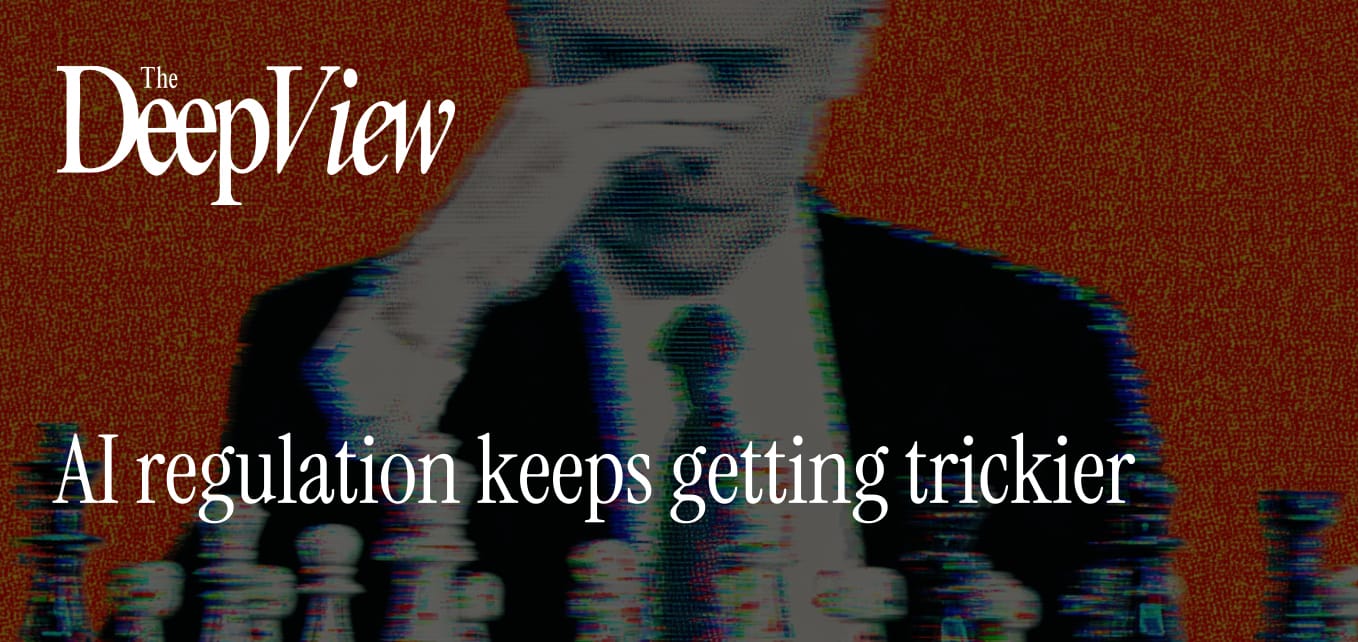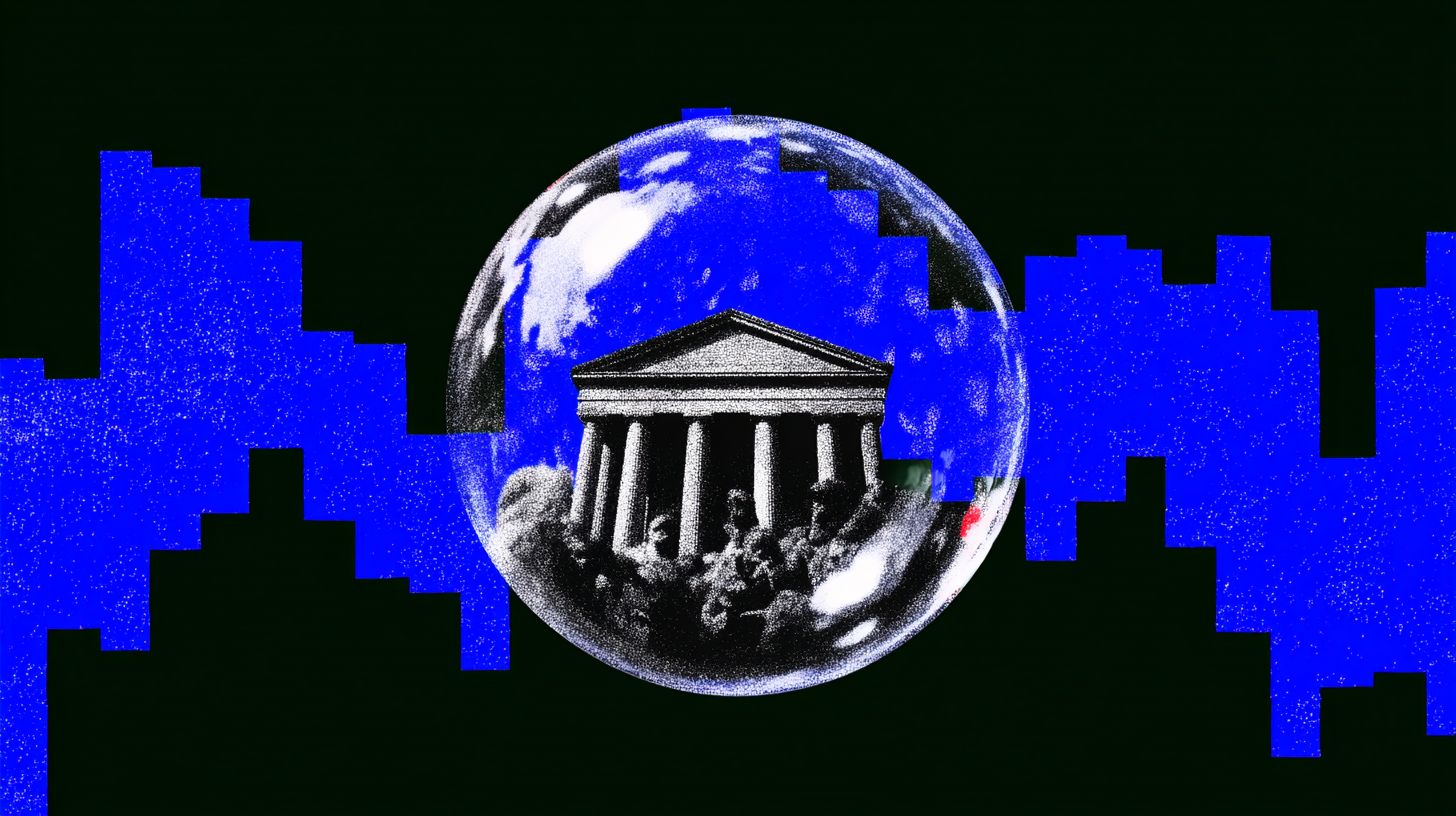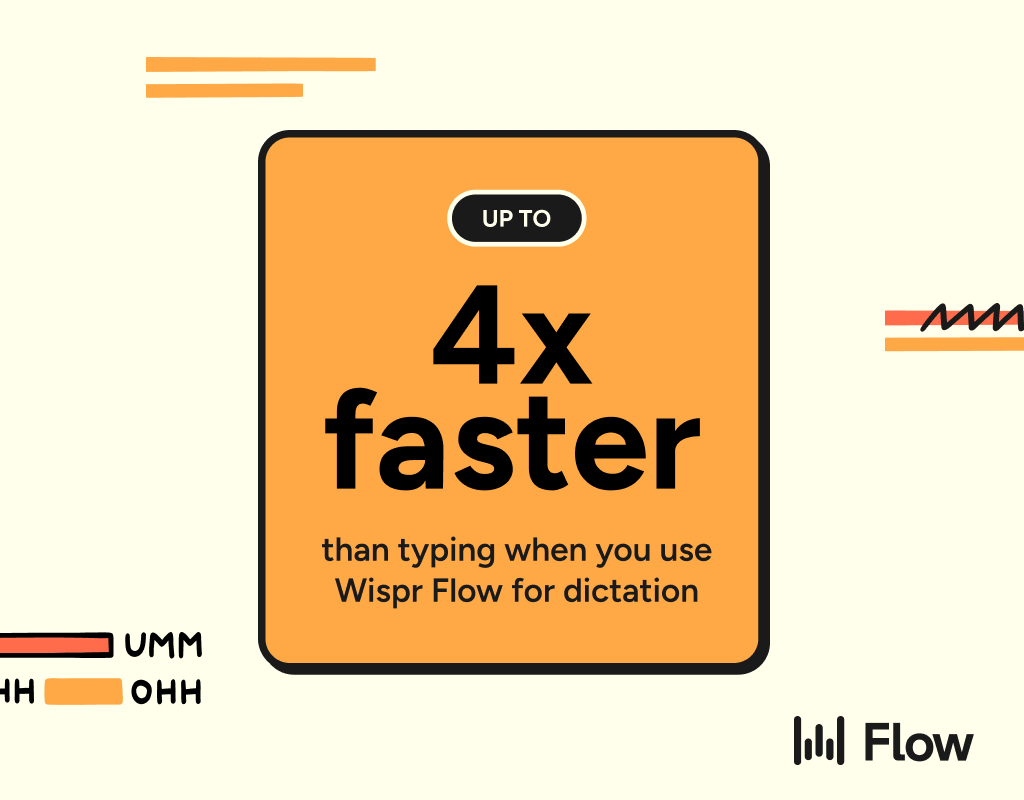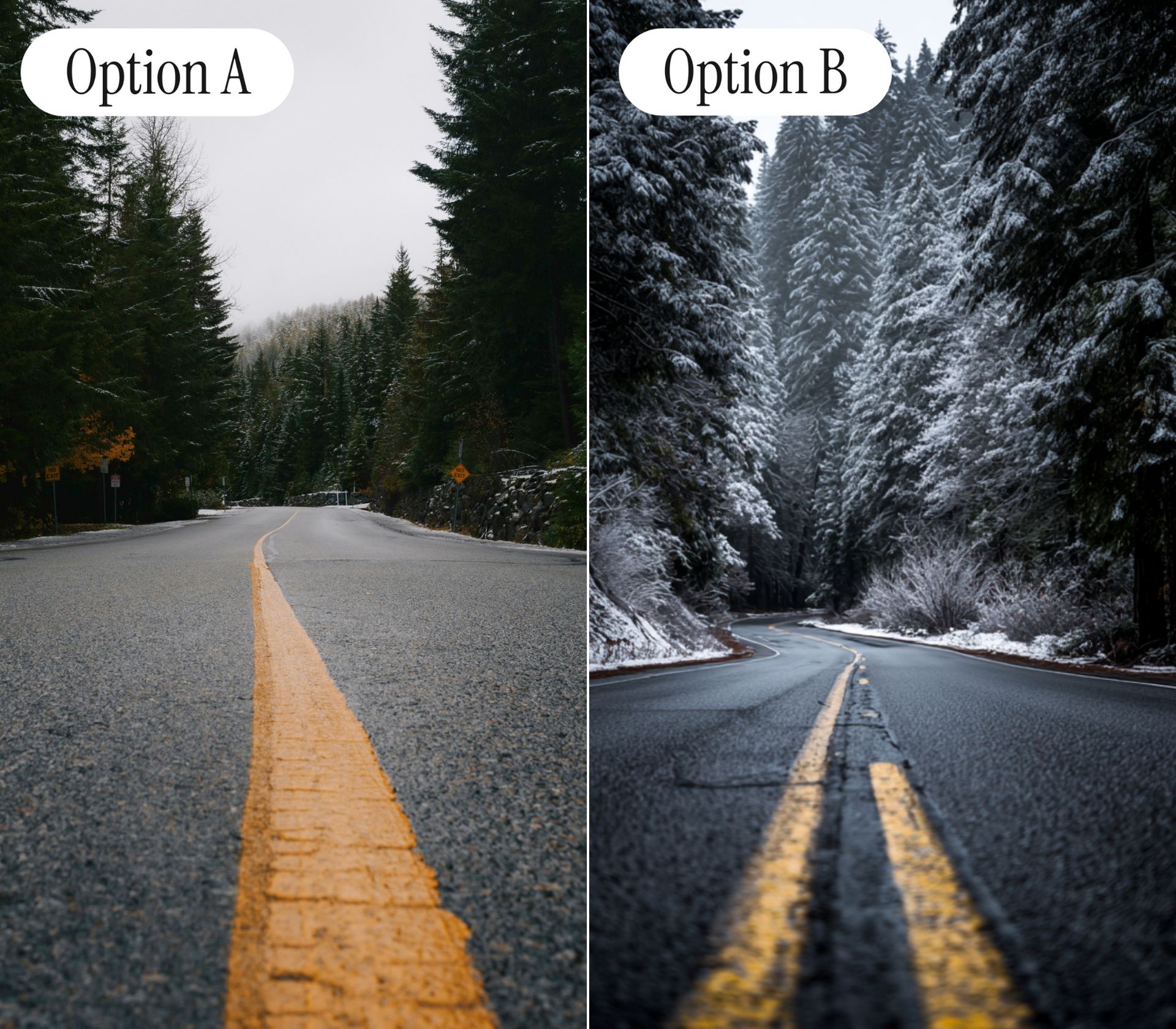- The Deep View
- Posts
- AI regulation keeps getting trickier
AI regulation keeps getting trickier

Welcome back. AI might be good enough to be your lab partner, but it can’t take the lead on the group project yet. Research released by OpenAI on Thursday found that GPT-5 is able to “shorten parts of the research workflow” when used by experts, showing particular capabilities in conceptual literature search, mathematics, theoretical computer science, biology and other sciences, However, this model can’t solve scientific research or run projects autonomously.
1. AI regulation keeps getting trickier
2. Is Nvidia an AI bubble indicator?
3. Google tracks its own deepfakes
POLICY
AI regulation keeps getting trickier

The AI regulatory landscape is getting stickier by the day.
The Trump Administration is reportedly considering an executive order that would preempt state laws seeking to govern AI, using lawsuits and withholding federal funding to do so, according to reports from multiple media outlets on Wednesday.
The order, which a White House official told Reuters was speculation until officially announced, would give Attorney General Pam Bondi the task of creating an “AI Litigation Task Force” focused solely on challenging state AI laws.
The order would also task the Department of Commerce to issue guidelines that would choke funding to those states, and calls on FCC chairman Brendan Carr and White House AI czar David Sacks to determine whether to adopt federal legislation related to AI disclosures that “preempts conflicting state laws”
The order comes as more states seek to regulate AI. The document specifically called out California’s SB 53, which established safety and transparency requirements for AI model developers, as “a complex and burdensome disclosure and reporting law.”
It’s not the only sign that some Republicans are seeking to limit state AI regulation, as House Republican leaders push to add provisions to the National Defense Authorization Act that would preempt state laws.
While the leaked executive order throws yet another bomb in the country’s legal AI battleground, it's too early to say what impacts it may have on policies, let alone companies themselves, Cobun Zweifel-Keegan, managing director of the International Association of Privacy Professionals DC, told The Deep View. Given how that model companies tend to have an international presence, state and federal compliance is “only one piece of this puzzle.”
“How strong an impact any such effort will have depends on how the Administration navigates a lot of tumultuous legal terrain,” said Zweifel-Keegan. “Overall, this is a battle between federal and state powers.”
However, the order only adds to the growing uncertainty of the current AI regulatory landscape, and not just in the US, Andrew Gamino-Cheong, CTO and cofounder of AI governance platform Trustible, told The Deep View.
The European Commission revealed plans this week to scale back the General Data Protection Regulation and water down the EU AI Act, its watershed privacy and AI laws. These moves signal“that there will be continued deregulatory efforts, at least in the 'western' world,” Gamino-Cheong said.

As the fight over how to regulate these AI firms wages on, these models become more powerful. Regulation that seeks to safeguard users from the risks of popular models may not be effective in keeping up with new risks emerging as the technology improves. Though these companies can, and to some extent do, self-regulate, there is little incentive for them to do so meaningfully if it keeps them from their goal: Creating models that are bigger, better and more capable than their competitors.
TOGETHER WITH WISPR
Flawlessly Turn Thoughts Into Words With Wispr Flow
If you’re like us, your best ideas don’t just come at random, they come all at the same damn time. That can make getting everything down on paper before you forget quite tricky – unless you have Wispr Flow.
Wispr Flow is a voice-powered AI keyboard that has perfected the art of speech to text. With unparalleled transcription skills plus on-the-fly AI editing, Wispr Flow allows you to write up to 220 words per minute just by talking to your device. Plus, it works from wherever you do: Brainstorm on the go on your iPhone, lock in on your Macbook, or even take down your thoughts mid-match on your Windows gaming PC.
Tired of your typing holding you back? Try Wispr Flow for yourself right here
BIG TECH
Is Nvidia an AI bubble indicator?

Water is wet, the sky is blue and Nvidia continues to rake in billions.
The AI chip kingpin once again delivered eye-popping earnings results this week, beating analysts’ expectations with $57 billion in revenue for the previous quarter and forecasting $65 billion in sales for the current quarter, largely attributed to data center sales.
The earnings seemed to momentarily calm fears regarding a looming AI bubble. CEO Jensen Huang said in the company’s earnings call: “There's been a lot of talk about an AI bubble. From our vantage point, we see something very different.”
Nvidia’s growth over the past three years has been astronomical. The company’s revenue this past quarter is seven times what it was in the same quarter of 2022, and its profit has grown more than eightfold in that time period.
“When will the AI boom end is a question investors have been very worried about lately, but this shows we aren’t anywhere close to that,” Ryan Detrick, Chief Market Strategist at Carson Group, told The Deep View.
But Nvidia’s success might not be the singular bellwether for the state of the AI market, Roman Eloshvili, Founder of XData Group, told The Deep View. Nvidia is simply the biggest beneficiary from the growing hype, he said. The popularity of its GPUs doesn’t make it a “thermometer,” but rather “the shopkeeper selling the hottest merchandise.” And even if Nvidia is investing in the market, much of that may be going back into its own pocket via circular financing.
The determining factor of a bubble might not be Nvidia’s boom, said Eloshvili. It’s the disconnect between how much money is going into AI infrastructure and how much “real, repeatable business value” is being derived.
“I think that Nvidia isn’t the one causing that tension - it’s just collecting tolls on a road everyone’s rushing down,” Eloshvili said.
TOGETHER WITH INCOGNI
Remove your personal data from Google and ChatGPT
Have you ever searched for your personal information on Google or ChatGPT? You'd be shocked to find out what people can find out about you.
Your name, phone number, and home address are just the beginning. Anyone deeply researching you can find out about your family members and relationships, SSN, health records, financial accounts, and employment history.
Incogni's Unlimited plan puts you back in control of your online privacy, keeping you safer from harmful scams, identity theft, financial fraud, and other threats impacting your physical safety.
Use code DEEPVIEW today to get an exclusive 55% discount on unlimited removals from anywhere that exposes your data.
PRODUCTS
Google tracks its own deepfakes

Google might be trying to curb its slop.
Starting Thursday, the Gemini app now tells users whether a photo was created or edited by a Google AI tool when asked the question “Is this AI-generated?” or “Was this created with Google AI?" The tool is currently limited to images, but will soon be extended to video and audio, and will be available in Search at a later date.
As of now, this identification tool only works against SynthID, Google’s digital watermarking tech that embeds “imperceptible signals” into AI-generated content. After SynthID was introduced in 2023, more than 20 billion AI-generated pieces of content have been watermarked.
Google is also working on verification for Coalition for Content Provenance and Authenticity (C2PA) credentials. This will allow it to detect when content has been generated by other AI tools, such as OpenAI’s Sora or Midjourney.
“Now, as generative media becomes increasingly prevalent and high-fidelity, we are deploying tools to help you more easily determine whether the content you're interacting with was created or edited using AI,” Google said in the announcement.
Generative AI is getting better at creating content that seems realistically human. On Thursday, Google released Nano Banana Pro, its new image generation tool with improved image resolution and text rendering, adding to the growing fray of capable generative models.
And more often than not, people can’t tell the difference between real and fake. And the consequences can be drastic:
Deepfake audio and video cybercrime has escalated in the past year, with fraud losses reaching more than $200 million in the first quarter of this year alone.
AI-generated evidence is increasingly appearing in court, causing judges to question how much they can trust it.
But Google’s approach to solving this problem should only be one of many, Ben Colman, CEO of Reality Defender, told The Deep View. “This solution, combined with other non-provenance models, creates a ‘Swiss cheese’ approach, where if one method does not stop/catch a deepfake, the other will,” he said.
LINKS

Prediction market Kalshi reportedly raises $1 billion at $11 billion valuation
Major record labels partner with streaming service Klay on AI tools
Verizon to lay off 13,000 employees, its largest layoff yet
AI academic research platform alphaXiv raised $7 million in seed funding
Warner Music Group partners with Stability to develop AI music tools
Robotics startup Physical Intelligence raised $600 million at $5.6 billion valuation
Saudi Arabia adopts Grok at scale, the first country to do so

Olmo 3: An open language model suite for reasoning, chat and tool use, by Ai2.
Bluma: A Canva-like tool for short-form video ads, automating your entire consumer marketing strategy.
Simbie AI: A voice agent for small and medium business medical practices to answer and return calls, and handle clinical tasks.
Talo: A real-time AI translator for video calls, events and streaming.
Guideflow: an AI-powered demo automation platform to immediately turn products into demos, sandboxes and live environments.

As of Sept 21, 2025, each U.S. H-1B visa costs $100,000.
Sponsorships are slowing, enterprises are struggling, and hiring just went global.
The winners? Those who hire remote-first.
Latin America offers world-class tech and AI talent in your time zone—for 60% less.
Smart hiring managers aren’t waiting. They’re hiring globally.
No visas. No delays. Just brilliant teams on demand.
(sponsored)
A QUICK POLL BEFORE YOU GO
Who should regulate AI? |
The Deep View is written by Nat Rubio-Licht, Faris Kojok and The Deep View crew. Please reply with any feedback.
Thanks for reading today’s edition of The Deep View! We’ll see you in the next one.

“The lighting and angle of the AI-generated image was just too perfect for a mortal photographer to capture a falling snowflake like that.” “It seemed the prompt would be too complex for AI to generate [this image]” “There is some damage on the snowflake, which AI tends to avoid. ” |
“I guessed. It's getting difficult with many photos unless you have some specific knowledge of the subject of the photo.” “[This image] appears flawless, particularly with the way the light is hitting the image, whereas [the other] seems more flawed/real.” “There were very few details, so this was a coin flip.” |

Take The Deep View with you on the go! We’ve got exclusive, in-depth interviews for you on The Deep View: Conversations podcast every Tuesday morning.

If you want to get in front of an audience of 450,000+ developers, business leaders and tech enthusiasts, get in touch with us here.






